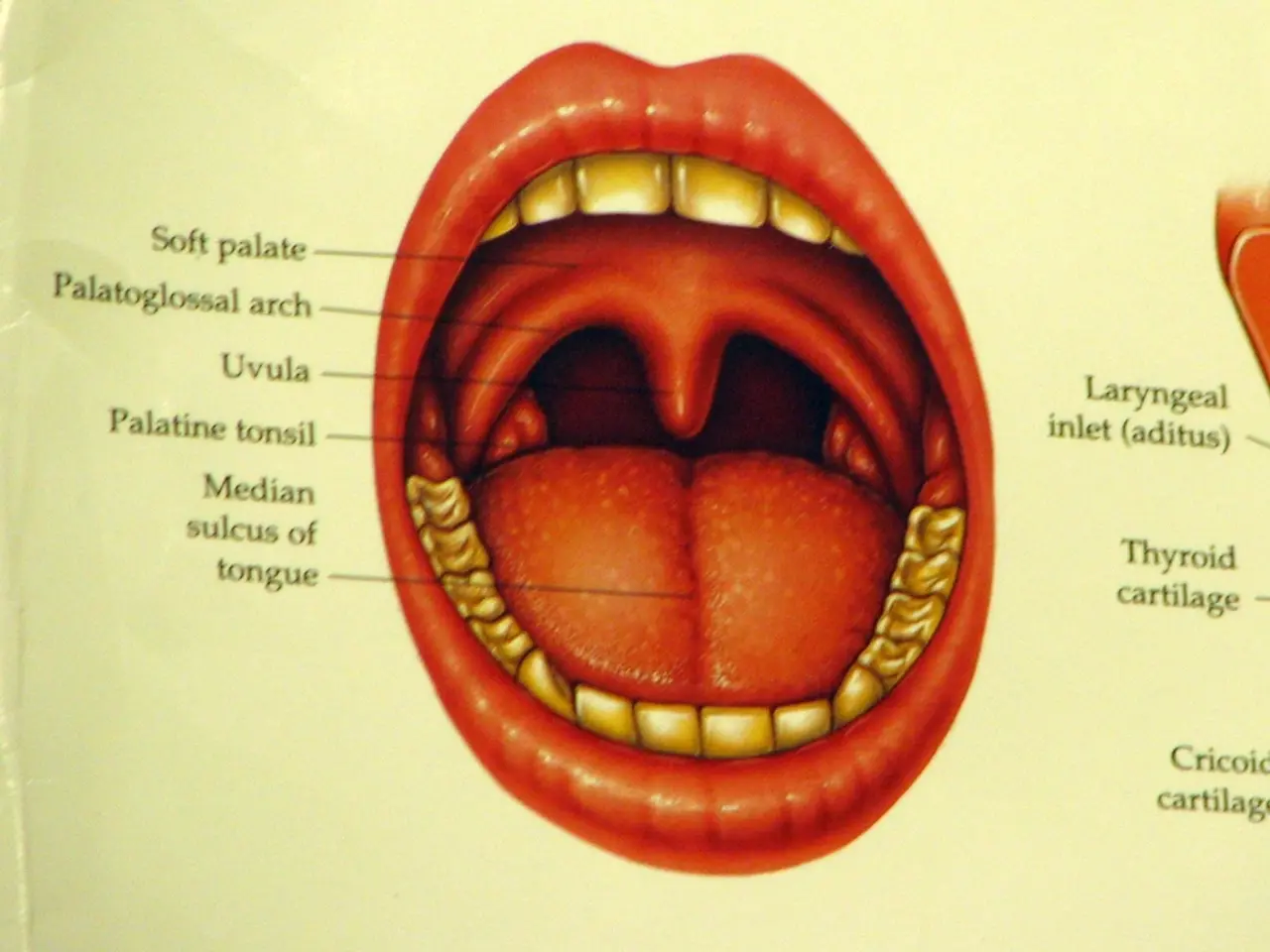Diagnosis Outlook for Oral Cancer
In this article, we delve into the prognosis, causes, symptoms, and treatments for oral cancer.
Oral cancer, a disease that affects various parts of the oral cavity, has a significant impact on individuals worldwide. The prognosis for oral cancer offers insights into the likelihood of survival for those diagnosed. According to the SEER database, the 5-year relative survival rate for cancers that affect the oropharynx is 50%. This rate increases to 91% for cancers that affect the lips and 68% for cancers that affect the tongue.
The oral cavity, the area of focus for oral cancer, includes the teeth, lips, lining of the cheeks and lips, gums, bony roof of the mouth, floor of the mouth, front two-thirds of the tongue, and the area behind the wisdom teeth. The oropharynx, another crucial region, includes the base of the tongue, tonsils, side and back walls of the throat, and soft palate.
Signs of oral cancer can be subtle but are crucial to identify. These may include sores that do not heal, thickening of the cheek or mouth, pain, red or white patches, difficulty in chewing or swallowing, numbness, a pain or swelling in the jaw, a lump in the back of the throat or neck, pain in the ear, difficulty in moving the tongue or jaw, pain around the teeth, changes in voice.
Treatment options for oral cancer are diverse and depend on the stage and type of the cancer. Surgery aims to remove the tumor and a margin of healthy tissue. Chemotherapy involves administering anticancer drugs through the mouth or injected into the veins. Radiation therapy uses high-energy X-rays to damage the DNA of cancer cells and kill them. Targeted therapy aims to slow the growth and spread of cancer by administering medicines that target specific proteins in cancer cells. Immunotherapy aims to boost an individual's immune system to fight cancer.
It's important to note that the survival rate for oral cancer depends on the type of cancer, the individual's health, and whether the cancer has spread. The SEER database categorizes cancer into localized, regional, and distant based on the spread of the disease. The 5-year relative survival rates for oral cancer in the U.S., according to SEER data, differ significantly by stage. Localized oral cancer (cancer confined to the primary site) typically shows the highest 5-year relative survival, often around 80-85%. Regional oral cancer (cancer that has spread to regional lymph nodes) has a 5-year relative survival around 60-70%. Distant oral cancer (metastatic disease) shows much lower survival rates, approximately 30-35%. The all stages combined 5-year relative survival for oral cancer is estimated at roughly 65-70%.
Common factors that can cause oral cancer include tobacco use, drinking excess alcohol, infection with human papillomavirus, issues with nutrition, and issues with oral hygiene.
For precise SEER numeric survival rates for oral cancer by stage, the National Cancer Institute’s SEER Cancer Stat Facts or official SEER website would be authoritative sources.
Read also:
- Foods to avoid for someone with interstitial cystitis include acidic foods like citrus fruits, spicy foods, artificial sweeteners, caffeine, alcohol, and fast foods high in sodium and preservatives.
- Analysis of Ro Hair Loss Solution: Is it the Optimal Choice for Male Pattern Baldness?
- Expanded on Feline Dilated Cardiomyopathy, a Heart Condition by Sarah J. Wooten, DVM, evaluated by Emily Oliver, CVT on 07/31/2025. Published on 07/30/2023
- Gatherings for Managing Eczema Symptoms




